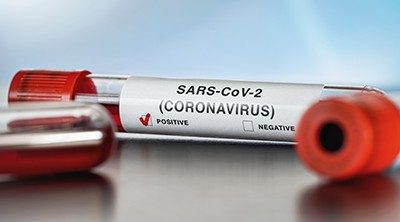FOR IMMEDIATE RELEASE
ACS News Service Weekly PressPac: June 09, 2021
SARS-CoV-2 protease cuts human proteins; possible link to COVID-19 symptoms
“The SARS-CoV-2 SSHHPS Recognized by the Papain-like Protease”
ACS Infectious Diseases
The SARS-CoV-2 papain-like protease (PLpro) plays an essential role in processing viral proteins needed for replication. In addition, the enzyme can cut and inactivate some human proteins important for an immune response. Now, researchers reporting in ACS Infectious Diseases have found other targets of PLpro in the human proteome, including proteins involved in cardiovascular function, blood clotting and inflammation, suggesting a link between the inactivation of these proteins and COVID-19 symptoms.
Viruses like SARS-CoV-2 make multiple proteins as one long “polyprotein.” Viral enzymes called proteases recognize specific amino acid sequences in this polyprotein and cut them to release individual proteins. However, some human proteins also contain these sequences (known as homologous host-pathogen sequences, or SSHHPS), including ones involved in generating the innate immune response, which could help protect the virus from the host. Patricia Legler and colleagues wanted to comprehensively identify human proteins that contain SSHHPS, examine their functions and see whether PLpro can cleave them in a test tube.
The researchers developed a computational method to search a database of all known human proteins for sequences similar or identical to the SARS-CoV-2 SSHHPS. The analysis revealed that the proteins with highest sequence identity were those that had cardiovascular, inflammatory, kidney, respiratory or blood-related functions. For example, two of the proteins containing SSHHPS were cardiac myosins, one was an anti-coagulant and another was an anti-inflammatory protein. Inactivation of these proteins by PLpro is consistent with COVID-19 symptoms of heart damage, blood clots and inflammation. The team confirmed that PLpro could cut these protein sequences in vitro. Performing the same analysis on SSHHPS for the Zika viral protease identified proteins associated with neurological development and disorders, consistent with Zika symptoms. These results suggest that the symptoms and virulence of viruses can be predicted directly from their genomic sequences, the researchers say.
The authors acknowledge funding from the Office of the Secretary of the Navy, Naval Innovative Science and Engineering funding and the Office of Naval Research.
###
The American Chemical Society (ACS) is a nonprofit organization chartered by the U.S. Congress. ACS’ mission is to advance the broader chemistry enterprise and its practitioners for the benefit of Earth and all its people. The Society is a global leader in promoting excellence in science education and providing access to chemistry-related information and research through its multiple research solutions, peer-reviewed journals, scientific conferences, eBooks and weekly news periodical Chemical & Engineering News. ACS journals are among the most cited, most trusted and most read within the scientific literature; however, ACS itself does not conduct chemical research. As a leader in scientific information solutions, its CAS division partners with global innovators to accelerate breakthroughs by curating, connecting and analyzing the world’s scientific knowledge. ACS’ main offices are in Washington, D.C., and Columbus, Ohio.
To automatically receive press releases from the American Chemical Society, contact newsroom@acs.org.
Note: ACS does not conduct research, but publishes and publicizes peer-reviewed scientific studies.
Media Contact
ACS Newsroom
newsroom@acs.org


